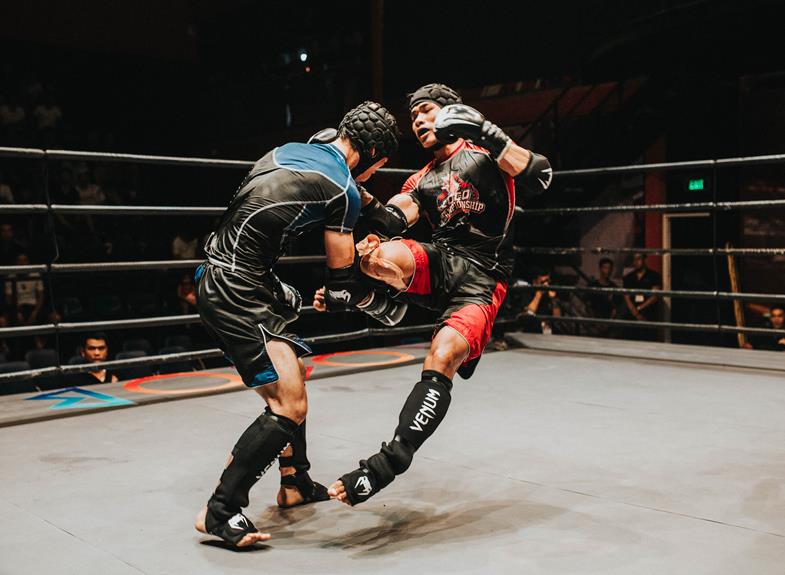Legal Battles Erupt Over Youth Sports Injuries
This article provides an in-depth exploration of the escalating legal battles concerning youth sports injuries. It delves into the complexities of liability, negligence, and the role of various parties involved. By examining common injuries, defenses, and potential damages, as well as the influence of insurance, the article offers a comprehensive understanding of this multifaceted issue. Based on a rigorous analysis of legal terminology and principles, it underscores the growing need for clarity and precaution in youth sports participation.

Key Takeaways
- Liability and responsibility for youth sports injuries can lead to legal disputes.
- Various parties, including coaches, trainers, organizations, and even parents, can be held liable for injuries.
- Negligence is often used to determine liability in youth sports injury cases.
- Damages that can be recovered in these cases include medical expenses, pain and suffering, and loss of future earning capacity.
Understanding Liability in Youth Sports Injuries
Although the notion of liability in youth sports injuries can be complex, it is essential to understand that it may fall on various parties, including coaches, trainers, sports organizations, or even parents, depending on the circumstances surrounding the injury. Key liability considerations for youth sports organizations include ensuring proper training and supervision, providing appropriate safety equipment, and adhering to established guidelines for injury management. Furthermore, parental responsibility in youth sports injury cases can entail a duty to supervise, proper disclosure of the child's health status, and understanding the inherent risks of the sport. A thorough understanding of these liability considerations is crucial for both parents and organizations to ensure the safety and well-being of youth athletes.
The Role of Youth Sports Participation in Injury Cases
The role of a child's participation in youth sports often becomes a significant factor in determining liability in injury cases. Legal battles erupting over such incidents highlight the impact on youth sports participation. The role of parents in youth sports injuries, the importance of proper supervision, safety guidelines, and the responsibility of organizations and leagues in preventing injuries are increasingly scrutinized. The need for training and education for youth coaches has become evident. Long term effects of youth sports injuries have raised concerns about the role of waivers and assumption of risk in these injury cases. Given the complexity of these issues, consulting a lawyer in youth sports injury cases is essential to understand the potential legal consequences and to safeguard the interests of all parties involved.
Common Injuries Encountered in Youth Sports
Sprains and strains frequently occur in youth sports, and if not properly managed, they can lead to more serious injuries such as growth plate fractures or torn ACLs. To mitigate these risks, preventing youth sports injuries is paramount and requires the concerted effort of coaches, sporting organizations, and most importantly, parents. Parents play a pivotal role in ensuring the safety of their children by ensuring adequate protective gear is worn, promoting physical conditioning, and advocating for safer playing environments. Nonetheless, the parental responsibility in youth sports injuries extends beyond prevention, including understanding the legal implications of such injuries. Furthermore, parents should educate themselves on the signs of serious injuries, ensuring timely medical attention is sought, thereby minimizing the risk of long-term damage.
Triggers of Personal Injury Lawsuits in Youth Sports
In youth sports, a personal injury lawsuit can be triggered by several factors, including negligence, recklessness, or intentional misconduct by the parties involved. The prevalence of youth sports injuries has magnified concerns about participant safety. High-profile cases have illustrated the legal implications of these injuries, often linked to the consequences of inadequate supervision. Negligence, the most common trigger, occurs when a coach, organizer, or supervising adult fails to exercise reasonable care, resulting in a preventable injury. Recklessness involves a disregard for safety norms, while intentional misconduct refers to deliberate harmful acts. Regardless of the trigger, the injured party must prove that the defendant's action or inaction directly caused the injury. Thus, understanding these triggers is pivotal in both preventing such lawsuits and successfully navigating them when they occur.
Legal Aspects of Negligence in Youth Sports Injuries
Understanding the legal aspects of negligence in youth sports injuries is crucial for all stakeholders, including coaches, parents, and sports organizations, as this knowledge can help prevent avoidable harm and potential litigation. The principle of negligence in such a context is intertwined with the concept of 'duty of care'. It implies that all stakeholders have a legal obligation to avoid behavior that could cause foreseeable harm. If a breach of this duty is linked to an injury, liability may be established. Legal consequences of inadequate supervision are significant, potentially resulting in hefty damages awarded to the injured party. Essentially, understanding these aspects helps foster a safer environment, minimizing the risk of injuries and subsequent legal battles.
Evaluating Defenses in Youth Sports Injury Lawsuits
Amid the myriad complexities of youth sports injury lawsuits, the evaluation of potential defenses plays a pivotal role, as it can significantly influence the outcome of the case and the awarded damages. The assessment of these defenses requires an intricate understanding of the legal landscape and the specific circumstances of the injury. One commonly invoked defense is the assumption of risk, which argues that the injured party knowingly participated in a risky activity. Furthermore, the impact of waivers could prove crucial in these cases, as pre-injury releases signed by parents or guardians could absolve certain parties from liability. However, the enforceability of these waivers varies by jurisdiction and their interpretation can be subject to judicial discretion. Therefore, it is imperative to consult with a knowledgeable attorney to effectively navigate these defenses.
Identifying Damages in Youth Sports Injury Cases
Determining the exact amount of damages in youth sports injury cases often involves assessing both the immediate medical costs and future financial implications, such as the potential loss of earning capacity, and requires a thorough understanding of the intricacies of personal injury law. This process of assessing damages can be complex and multifaceted. It is crucial to evaluate the extent and severity of the injury, the impact on the child's future life, and the negligence or liability of the involved parties. Emotional distress and pain and suffering are also considered in calculating damages. Compensation options may include settlement negotiations or litigation. A key aspect is the availability of insurance coverage, which can significantly influence the compensation obtained. In all scenarios, expert legal advice is invaluable in navigating these challenging cases.
The Impact of Insurance in Youth Sports Injury Litigation
While insurance plays a critical role in compensating for injuries sustained in youth sports, it also significantly influences the legal strategies and outcomes in related litigation cases. Insurance policies dictate the kind of financial support available for medical treatments and rehabilitation. The importance of proper training in youth sports is often emphasized for injury prevention, but it also contributes to the assessment of negligence in litigation. The role of parents in preventing youth sports injuries is crucial, as they are typically the ones to provide consent for participation, often including an agreement to certain insurance terms. However, in cases of gross negligence or misconduct, insurance becomes a complex element in litigation, potentially affecting the extent of compensation and the direction of legal strategies.
Frequently Asked Questions
What Role Does the Age of the Injured Player Play in Determining Liability in Youth Sports Injuries?
The age of the injured player can significantly influence liability determination in youth sports injuries. The Informed Consent rule suggests that older players may have a greater understanding of the risks involved, potentially reducing liability claims. However, the Negligence Standard applies universally, requiring all parties to exercise a duty of care irrespective of the player's age. The age factor can thus impact the interpretation of liability but does not eliminate the necessity of responsible conduct in youth sports.
How Does the Prevalence of Injuries in Certain Sports Influence Legal Actions and Policies?
The prevalence of injuries in certain sports significantly influences legal actions and policies. High-risk sports often prompt stricter injury prevention strategies and regulations. The impact of concussion legislation, for instance, has led to mandatory training for coaches and stricter return-to-play rules in sports with higher concussion rates. Legal actions can increase if injury risks are not adequately addressed, highlighting the importance of proactive safety measures in youth sports.
Are There Any Special Considerations for Injuries Caused by Equipment Malfunction or Failure in Youth Sports?
In youth sports, injuries caused by equipment malfunction or failure can lead to complex liability issues. Key considerations include equipment inspection protocols and manufacturer accountability. Equipment used should adhere to safety standards and regular inspections are crucial to ensure functionality. If equipment failure is due to manufacturing defects, the manufacturer may be held accountable. However, proving such cases often requires detailed investigation and expert testimony, making legal guidance essential.
Can a Sports Ruling Body or Association Be Held Legally Responsible for Failing to Implement Adequate Safety Measures in Youth Sports?
Yes, a sports ruling body or association can be legally accountable for failing to implement adequate safety measures in youth sports. They may be held liable under negligence if they fail to establish and enforce appropriate safety protocols. Parental consent implications also play a pivotal role. Parents entrust the safety of their children to these organizations, therefore, any negligence in coaching or supervision could potentially lead to legal consequences.
How Does the Financial Status of the Defendant Impact the Litigation Process and Outcome in Youth Sports Injury Cases?
The defendant's financial status, particularly their insurance coverage, significantly influences the litigation process and outcome in youth sports injury cases. Adequate insurance can expedite settlement negotiations, reducing litigation duration. Conversely, limited resources or inadequate insurance may prolong litigation or result in unsatisfactory settlements. The defendant's ability to pay damages often determines the plaintiff's decision to sue and their potential recovery, making it a crucial factor in such cases.
Conclusion
In conclusion, the realm of youth sports injuries is a complex legal field marked by nuanced issues of liability, negligence, and potential damages. A careful examination of these aspects, along with understanding common injuries, participation dynamics, and the role of insurance, can offer valuable insights into the litigation landscape. While youth sports offer significant benefits, the potential risks necessitate a proactive approach to prevent injuries and mitigate legal disputes.

This post has been generated by AI and was not reviewed by editors. This is Not legal advice. Please consult with an attorney.




